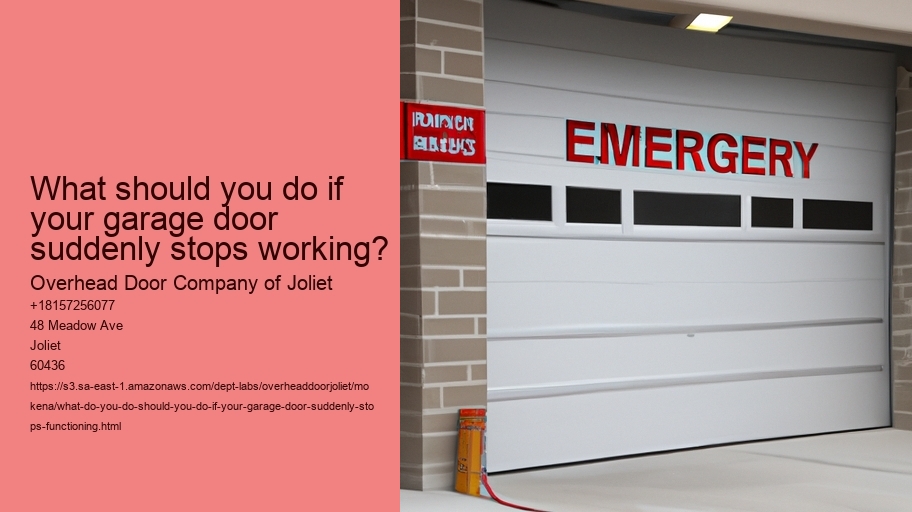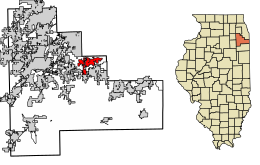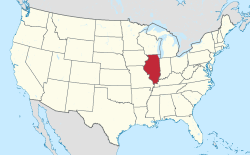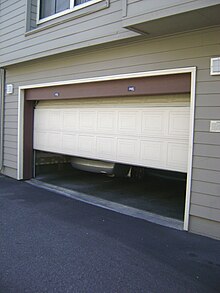Determine the Type of Garage Door and Opener
It is vital to identify the type of garage door and opener that you are using before you start troubleshooting. What is the one thing You Should Do When Your Garage Door Suddenly Stops Working? .
Garage doors generally fall into a few categories based on their style and operation.The most commonly used types are sectional, roll-up and tilt-up doors.Sectional doorways are constructed from panels that are joined by hinges, which allow the door to bend as it is closed and opened on vertical track.Roll-up doors, typically seen in commercial spaces made from panels that fold up into coils.
Tilt-up doors on the contrary are a single piece that tilts in and up when it opens.What do you do should you do if your garage door suddenly stops functioning? - Griffon Corporation
- Cahokia
- Chicago
- Griffon Corporation
After you have identified your garage door's type and the opener's model then the next step is to carry out a basic check for common issues.Ensure that power is connected to the opener checking the outlet and breaker.Inspect the manual release cord to make sure it hasn't been pulled, which will disconnect the door from the opener.Examine the door's tracks and rollers for obstructions, or damage, and then clear any obstructions.
If required, lubricate moving parts. A lack of lubrication could cause them to jam or even become stuck.If the door is still unable to operate, think about resetting your opener.This will often fix electronic malfunctions or faults.Consult your opener's manual for specific reset instructions as this procedure can differ among models.Many modern openers include reset buttons, however others require disconnecting the plug and plugging it back in.
The tension on springs can be high, and could be dangerous to repair them without the proper tools.
In the end, if your garage door suddenly stops functioning, it is
Check for Obstructions or Debris
It's frustrating and confusing when the garage door stop working in a flash, especially if frequently use it.
This simple, but efficient step can be used to pinpoint the problem, and restore the functionality of your garage.Garage doors run on a system consisting of rollers, tracks and other moving parts that have to be free of obstacles to work smoothly.Over time dirt, leaves, small stones, or other debris can accumulate along the tracks, or get stuck in the rollers.Even a small obstruction can stop the door from opening or closing properly.Therefore an in-depth inspection of these components should be the first step.
Start by inspecting the tracks both on the left and right sides of the door. Check for obvious obstructions or debris buildup. If you spot anything strange, like the twig or rock stuck in the track. Take it out with care.
The issue might not always be obvious. To determine whether the issue is present, move your fingers down the track. Also, make sure that the tracks are properly aligned. A misalignment could also result in a jammed door.Next, inspect the rollers as well as hinges.These parts should be able to move without resistance.If they're sloppy or stuck, it might be a sign of the accumulation of grime or rust.In the event of such a situation cleaning and lubricating them will often solve the issue.Use a gentle cloth or brush to clean any dust, and then apply a lubricant that is suitable to make sure that the parts move smoothly.
Be sure to inspect the area surrounding the door. There are occasions when objects in the garage can drop or move, hindering the door's path. Make sure the area is free of obstructions and that there are no objects that could block the door.
Examine the sensors to determine why the door is not opening after removing any obstructions.
The sensors that are fitted to modern garage doors can malfunction when they're dirty, or if they are not aligned correctly.When faced with the garage door that abruptly stops working, checking for obstructions or debris is a reasonable and often efficient first step.It takes only a few tools and expertise, yet it can save you money, time as well as the inconvenience of contacting a professional for the most straightforward fix.By maintaining a clear path and
Check the wall switch and remote control
It's crucial to examine the wall switch and remote control.
These components are frequently the main reason behind an unresponsive garage door, and doing a check can help you save time and possibly avoid unnecessary expenses.First, consider the remote control.This handheld device is your primary tool for operating the garage door without direct physical interaction.Over time, remote controls can experience issues such as drained batteries, signal interference, or even internal damage.Start by replacing the batteries with new ones.It might seem simple, but dead batteries are a common reason for a garage door not responding.If the problem persists after replacing the batteries, try reprogramming the remote according to the manufacturer's instructions.Additionally, ensure that the remote is within the recommended range and that there are no obstructions blocking the signal.
The wall switch is an essential component of the garage door system.
The wall switch is directly connected to the garage door opener and generally provides a more reliable way of operation.Inspect the switch for signs of physical damage or wear.Sometimes, loose wires or connections that are not working correctly can make the switch malfunction.If you are able to do it, then carefully open the switch's panel and look for damaged or disconnected wires.If you discover any issues there is a need to call an electrician who is licensed to address the problem.In certain situations, the wall switch may appear to be functioning properly, yet the door remains unresponsive.This could indicate a problem with the garage door opener itself or other parts like the sensors or the door tracks.However it is best to start with the remote control and wall switch would be a sensible first step.
You can eliminate these issues before moving on to more complex troubleshooting.In the end, examining the remote control and wall switch in the event that your garage door suddenly stops operating is a straightforward and efficient approach.By inspecting these parts first, you can quickly determine if the issue lies in these parts that are easily accessible or if additional examination is needed.This initial inspection does not only cut down on time, but also gives peace of mind knowing that you've taken the proper steps to determine the issue correctly.
Manually test the door's balance
It's frustrating and frustrating when the garage door ceases functioning. Garage doors are a vital part of your home, since it is a security feature, a shield against elements, as well as easy access to your car as well as storage.
Manually testing the balance of the garage door is a critical step to take should your door be malfunctioning. This easy but efficient method will help you diagnose any potential problems and prevent the possibility of further damage.The balance of a garage door is vital to its efficient functioning.A well-balanced door ensures that the door opener doesn't have to work harder than is necessary, which reduces the chance of wear and tear on the motor as well as other parts.An overbalanced door however could cause more significant problems over time, including misalignment, broken springs, or even a complete system failure.Therefore conducting a test of the door's balance is a crucial test that will help determine if the issue is in your door or opener mechanism.
To test the door's balance, first disconnect the garage door opener.
The majority of garage doors come with a release mechanism, often an orange cord or handle, that allows you to remove the door from the motor.Once the door is disconnected then carefully raise it to waist height and then release it.A properly balanced door should stay in place or move slowly.If the door begins to fall quickly or shoots upwards, it indicates an imbalance.If you observe that the door is not balanced it is essential to take care of the issue promptly.Door balance problems are often related to tension in the springs, which is a risk to adjust yourself due to the high tension they're under.It is advised to seek assistance from a professional for adjusting the springs and make sure that the door is balanced correctly.Doing this not only fixes the immediate issue but also increases the longevity and durability of the garage door system.
Manually testing the balance of the garage door is a vital first step to do when it suddenly ceases to function.
In addressing problems quickly and recognizing the importance of each, you can ensure that your garage door will operate efficiently and safely in the future.Tracks and Rollers
If you're confronted with a garage door that suddenly refuses to operate, your first response is to panic or think of the most complicated technical issues.However usually, the solution lies in a quick inspection of the tracks and rollers.This fundamental check can help you save time and costly repairs which is why it's the first thing you should prioritize in the event that your garage door ceases working.
The tracks and rollers in your garage's operational system are vital. The tracks are the metal rails that help guide the door when it opens, and the rollers are the ones that move through the tracks.
As time passes, these components get dirty, misaligned or worn out, resulting into operational issues.Begin by examining the track for any obstructions. The accumulation of dirt, dust or even small pieces of debris can be accumulating, which causes rollers to struggle to move along the path. Cleaning the tracks using an aqueous cloth will resolve the problem.
The next thing to do is checking the alignment of the track. Tracks must be parallel and perfectly straight. If they appear bent, or out of alignment the door may jam. It is possible to tap the misaligned section back into place using an instrument made of rubber. However, if damage is severe, it's advised to speak with an expert who can align the tracks correctly.
Checking the rollers is equally important.Over time, rollers can get damaged or worn out especially if made from plastic.
Check for indications of wear and tear such as cracks, or chips.If the rollers appear worn, consider changing them out with brand new ones.Metal rollers that have ball bearings typically offer greater durability and smoother operation.In addition, lubrication plays an vital role in maintaining the smooth motion of the tracks and rollers.Applying an oil based on silicone could lower friction and stop wear.Make sure to lubricate all moving parts, including springs and hinges to ensure that your garage door operates efficiently.
When you make sure that the components are properly aligned and lubricated it is possible to get the garage door back to its complete functionality.
Regularly inspecting and maintaining these parts will also aid in preventing future malfunctions. This will prolong the life of the garage system.Check for visible damage or Wear
It can be very frustrating and inconvenient when the garage door stops working suddenly, especially if you're on your way home, or trying to lock the house to sleep.
Garage doors are complex structures which include rollers, springs tracks, cables, and other components. As time passes, the components of this system will be damaged due to regular use and exposure.
It is easy to spot obvious defects by conducting a visual inspection. Begin by inspecting the springs, which are crucial for the lifting and lowering of the door.Look for any signs of damage, rust or misalignment.A damaged or worn-out spring can make the door inoperable, therefore it is imperative to take care of this issue promptly.Next you should look at the cables and check for damaged or frayed cables that may hinder the door's movement.Similarly, inspect the rollers and tracks for any damage, dents or obstructions that could be hindering the door's path.
What do you do should you do if your garage door suddenly stops functioning? - Chicago
- emergency
- Ohio
- joist
The door is another area that requires focus. Be aware of visible damage, warping or bends.
Ensure that the sensors at the door are clear and in good alignment. Dirt or misalignment may cause the sensors to fail and stop working.Although a visual inspection may provide valuable insights However, it's important to remember that some issues might not immediately apparent.If you don't see any obvious indications of wear or damage, it could be necessary to seek out a professional to identify and fix the problem.However, by conducting a preliminary inspection, you can often spot and resolve minor issues before they escalate into more significant and costly repairs.
In conclusion, when you are faced with an unusable garage door, examining it for obvious wear or damage is the initial step.This approach not only helps in identifying the issue swiftly but also helps you make the appropriate action to bring the door back to its original condition.
Being proactive and vigilant to your garage door's needs, you can guarantee the longevity and durability of the garage door.Check for Springs and Cables
When your garage door suddenly stops working, it can be both difficult and inconvenient.One of the most essential steps you need to take in this instance is to check the springs and cables.These components are integral to the functioning of your garage door and problems caused by them are usually the cause of a malfunctioning door.
Springs play an essential part in the operation of your garage door through helping to balance its weight.When the door is moving, the springs take on most of the burden and allow the door to open and close smoothly.There are generally two kinds of springs: the torsion and extension springs.Torsion springs are positioned above the garage door and are twisted to store energy. While extension springs are located on both sides of the door and can stretch to create the force needed for the.
Over time, these springs can wear out, break or lose tension, which can lead to problems with operation.In the same way, cables are crucial as they work with springs that lift and lower the door.They are usually made of steel and designed to withstand a lot of tension.However, they can suffer from wear and tear, break, or snap due to the pressure they're under.A broken cable can result in the door becoming unbalanced or become completely inoperative.
If you're unsure if the cables or springs require to be adjusted, visual look them over. Check for signs of wear and rust.
Safety is paramount while working with garage door components.
Springs and cables are under high tension and can cause serious injuries should they be mishandled.If you're not a pro at garage repair, it's advisable to consult an experienced technician.They have the necessary tools and expertise to safely repair or replace these components, ensuring your garage door operates properly and securely.In conclusion, when your garage door suddenly stops working, assessing the springs and cables is a key step in diagnosing the problem.Understanding their role and potential issues can help you determine whether a simple adjustment is needed or if professional intervention is required.Taking prompt action not only restores functionality but also ensures the safety and longevity of your garage door system.
You Should Call a Professional Technician
When your garage door suddenly stops working, it can disrupt your day or even create danger to the security of your home.
It may be tempting to pull out an instrument box to attempt a fix by yourself, but it is best to contact an expert. This decision will not only guarantee your security, but will provide a long-lasting and more effective solution.Garage doors are complex systems composed of various components such as springs, cables, tracks, and electronic parts.Each of these elements plays a crucial role in the door's operation, and a malfunction in any part can cause the entire system to fail.Without proper knowledge and experience, attempting to fix these issues can be dangerous.For instance, garage door springs are under high tension and can cause severe injury if handled improperly.Professional technicians are trained to deal with these risks safely, using the right tools and techniques to handle repairs.
A professional technician can also bring a level of know-how and experience that laypeople do not possess.
They can quickly diagnose the issue and identify whether it's a minor problem, like a misaligned track, or something more serious, like a broken spring.This expertise not only saves you time but also prevents the potential for further damage that can occur with incorrect handling.Professionals also have access to high-quality parts and can ensure that replacements match the specifications of your existing garage door system, leading to better functionality and longevity.A skilled technician will also save money in the long haul. While DIY methods DIY option may appear to be less costly initially but, it could end up resulting in larger and more expensive repairs later on.
Many technicians offer warranties on their services. This gives you confidence that in the event something goes wrong, your problem is protected.A professional could save you a lot of time and hassle.Trying to understand the complexities of garage door mechanics, purchase the correct tools, and then execute repairs can take hours or days.In the opposite, a professional can often resolve the issue quickly, and allow you to get back to your routine without delay.
The desire to repair the garage door yourself is very strong.
What do you do should you do if your garage door suddenly stops functioning? - Cahokia
- drawbar
- budget
- finance


















